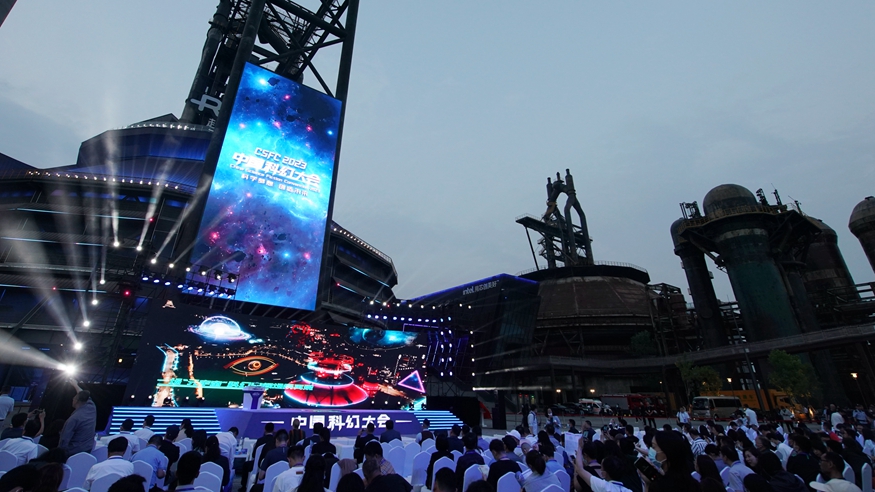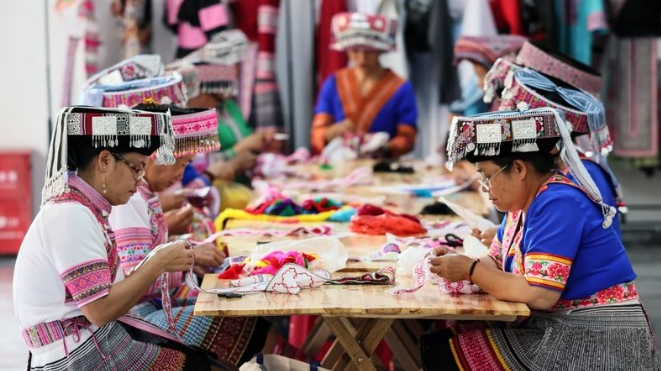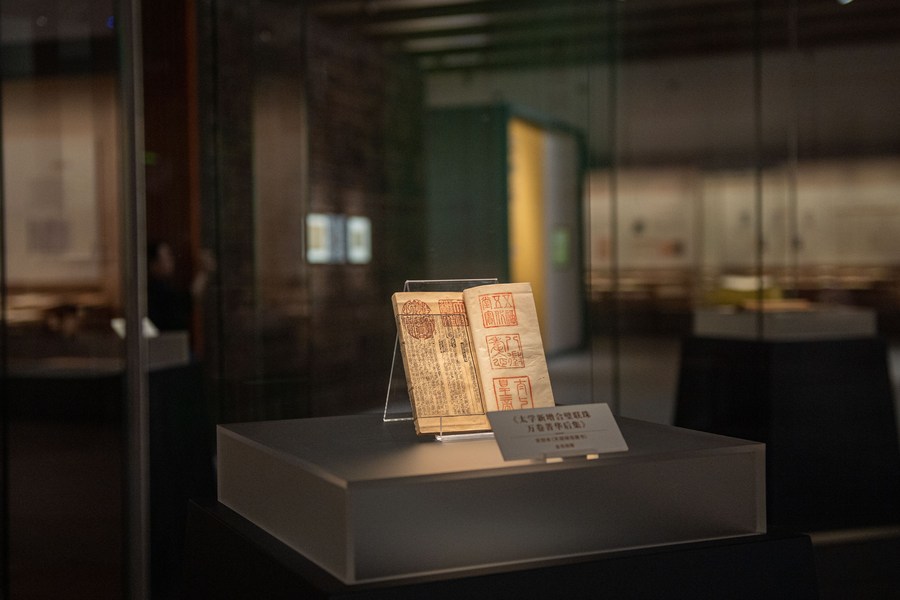
An ancient book is exhibited at the Hangzhou branch of the National Archives of Publications and Culture in Hangzhou, east China's Zhejiang Province, July 30, 2022. (Xinhua/Jiang Han)
HANGZHOU, June 3 (Xinhua) -- A cluster of large yet quaint buildings scattered across lush Chinese gardens, Wenrunge appears at first to be a museum or art gallery.
Yet behind its elegant and tranquil facade, a grand project is underway to collect all sorts of printed and digital works that carry the imprint of the Chinese civilization for preservation and inheritance purposes.
Wenrunge opened to the public in August 2022 and is the branch of the China National Archives of Publications and Culture located in the city of Hangzhou, the capital of east China's Zhejiang Province.
The national archives are headquartered in Beijing and have branches in Hangzhou, Guangzhou and Xi'an. Together, they serve as a national database of bibliology resources and a "seed gene bank" of the Chinese culture.
In Wenrunge, the Chinese civilization is recorded across 2.5 million publications in various categories, from ancient books and documents to contemporary journals, videos and computer games.
Apart from the 1.5 million publications sent from the Beijing headquarters, the Hangzhou branch houses 1 million items contributed by local cultural institutions and private collectors.
Its repository includes two volumes of "Yongle Dadian," an encyclopedia compiled in the 15th century, as well as sutras from the Leifeng Pagoda and 1,142 versions of "The Communist Manifesto," said Zhang Pu, vice curator of the Hangzhou branch.
Many other printed items, such as postcards, tickets and trademarks, have also been collected and displayed as they are of special cultural and historical significance or bear marks of a specific era, Zhang said.
"In the exhibition section, we also display food coupons, stamps, marriage certificates and other items that may strike a chord with ordinary visitors," he said.
A rising cultural landmark, the Hangzhou branch has gradually gained popularity among locals for its vast collections, unique architecture and regular exhibitions. So far, the institute has received more than 420,000 visitors.
"Apart from our preservation work, we also use exhibitions to bring publication-related knowledge and the traditional Chinese culture closer to the general public," he said.
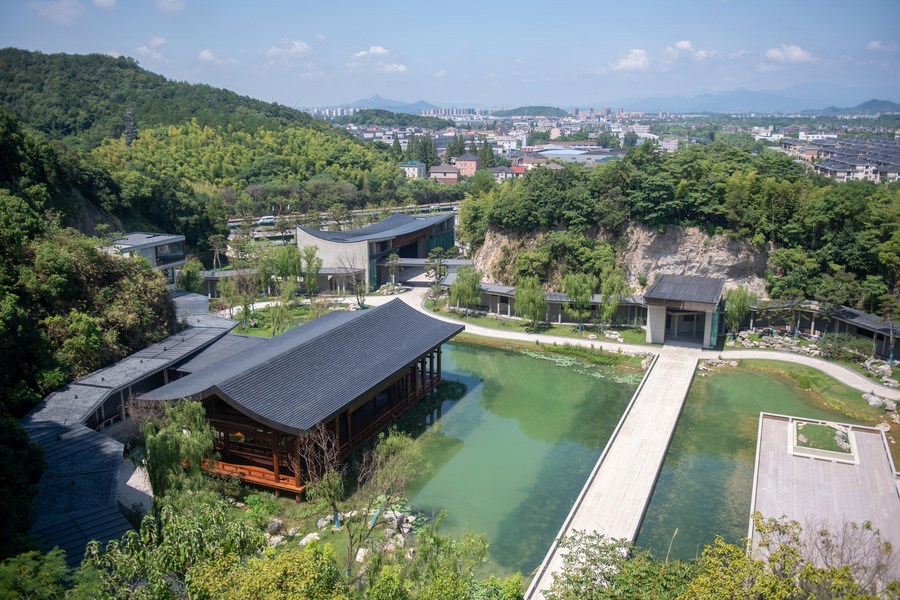
Aerial photo taken on July 30, 2022 shows a view of the Hangzhou branch of the National Archives of Publications and Culture in Hangzhou, east China's Zhejiang Province. (Xinhua/Jiang Han)
REGIONAL DIVERSITY
Wenrunge's staff say they believe their work is in line with the book-collecting tradition of the Jiangnan culture. The facility has also dedicated itself to the collection and showcasing of the prominent regional culture in east China.
At an ongoing exhibition, more than 600 works showcase the publications and other cultural works associated with the Jiangnan region, one of the most prosperous regions in both ancient and modern China.
A focus on the regional culture also characterizes Wenqinge, the Guangzhou branch of the China National Archives of Publications and Culture that specializes in the Lingnan culture in south China.
Its Cantonese-style mooncake exhibition is catching the eye of visitors, pooling hundreds of mooncake-related printed materials such as price lists, wrappings and leaflets.
The exhibition is a time capsule of different eras. In the years after the founding of the People's Republic of China, mooncakes had simple paper wrappings bearing images of things such as harvests and red stars. They were increasingly replaced by iron boxes after the beginning of China's reform and opening-up.
After the turn of the century, designs included more fashionable and global elements, and mooncake boxes featured more exquisite crafting and more environmentally friendly materials.
"You can see the economic take-off of the region from the mooncake designs," curator Zhang Weitao said.
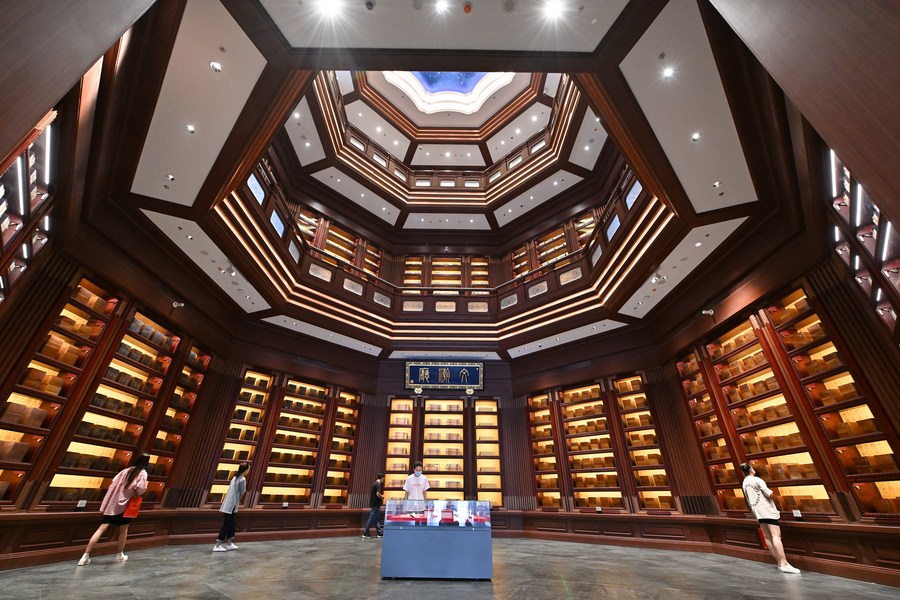
Visitors look at exhibits at the headquarters of the National Archives of Publications and Culture in Beijing, capital of China, July 30, 2022. (Xinhua/Li Xin)
GOING DIGITAL
Both physical and digital versions of publications will be weighted equally as the Guangzhou branch expands its collections, Zhang said. Projects to build a digital version of the archives and hold permanently online exhibitions are also being mulled.
The Hangzhou branch is digitalizing precious items in its physical collections to help them endure the vicissitudes of time, said Chen Feng, head of the branch's digital resources and IT department.
Digital technologies have also helped the archives monitor and manage sprawling reservoirs in an improved manner.
"Every item will be assigned an identification code, which will allow us to realize real-time tracking as the item goes through cataloging, repairs, exhibition or departure. It will also help maintain the bonds between donations and their collectors," Chen said. ■





